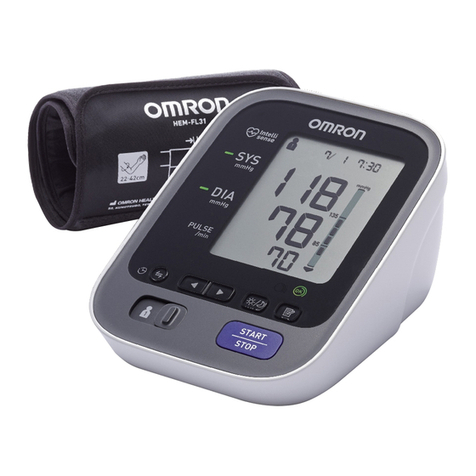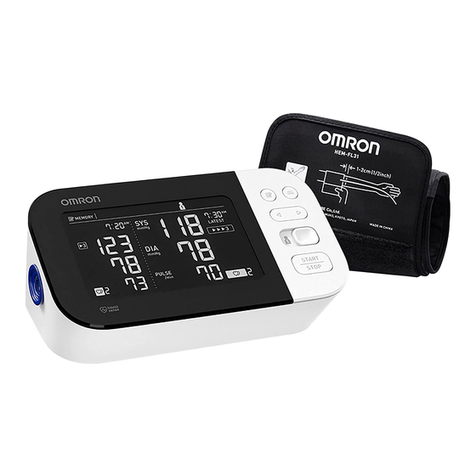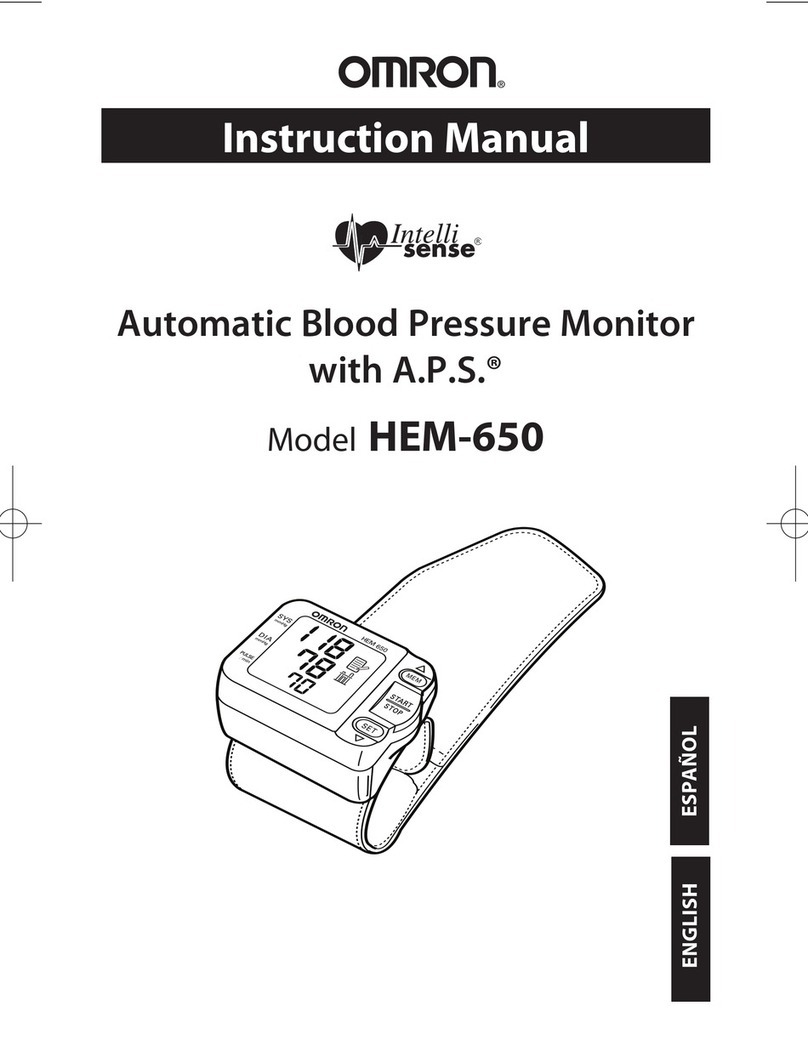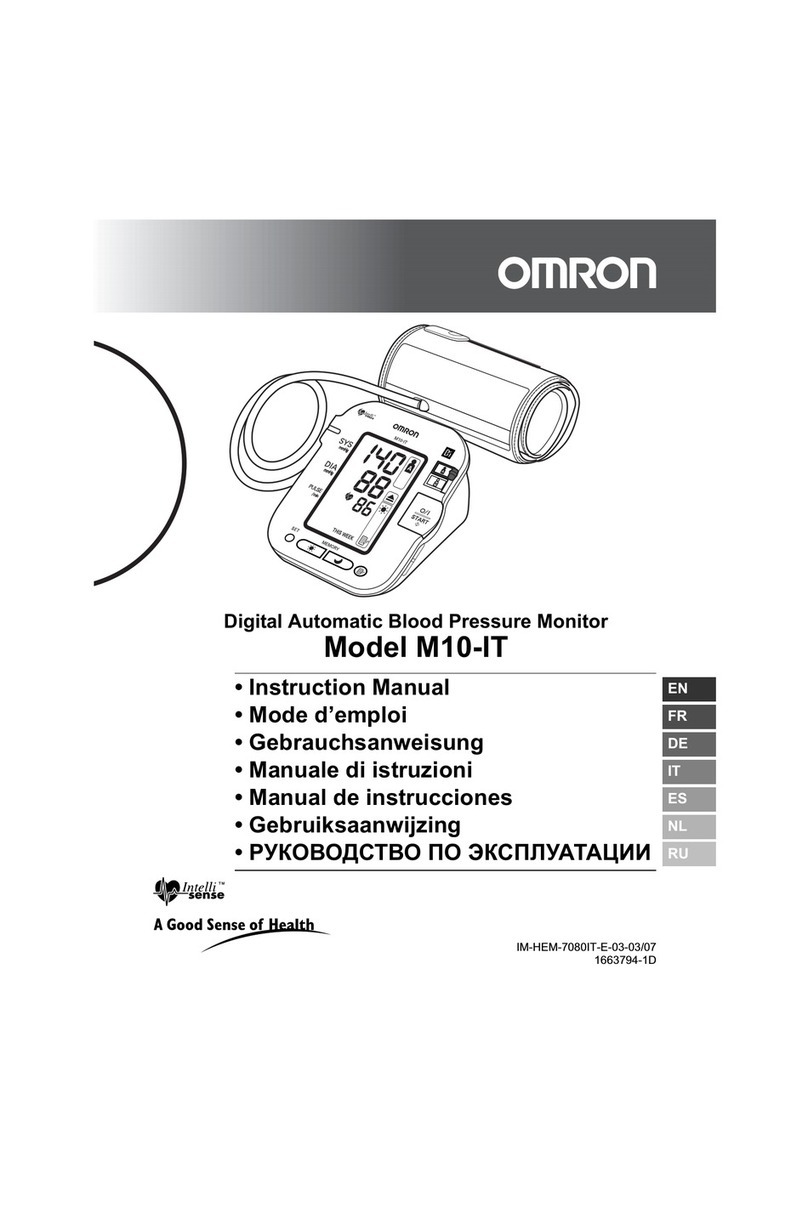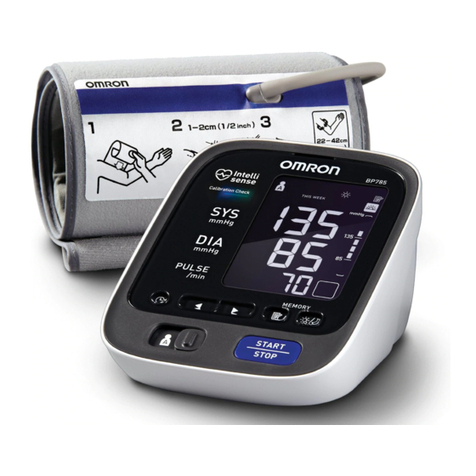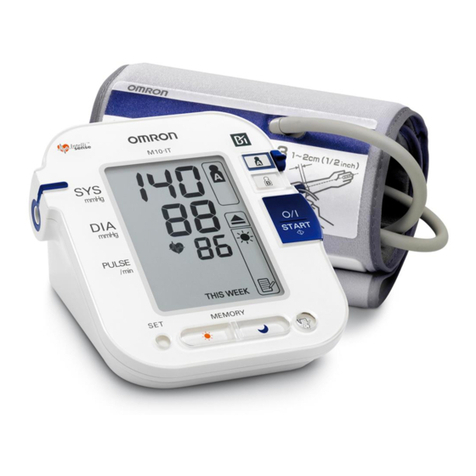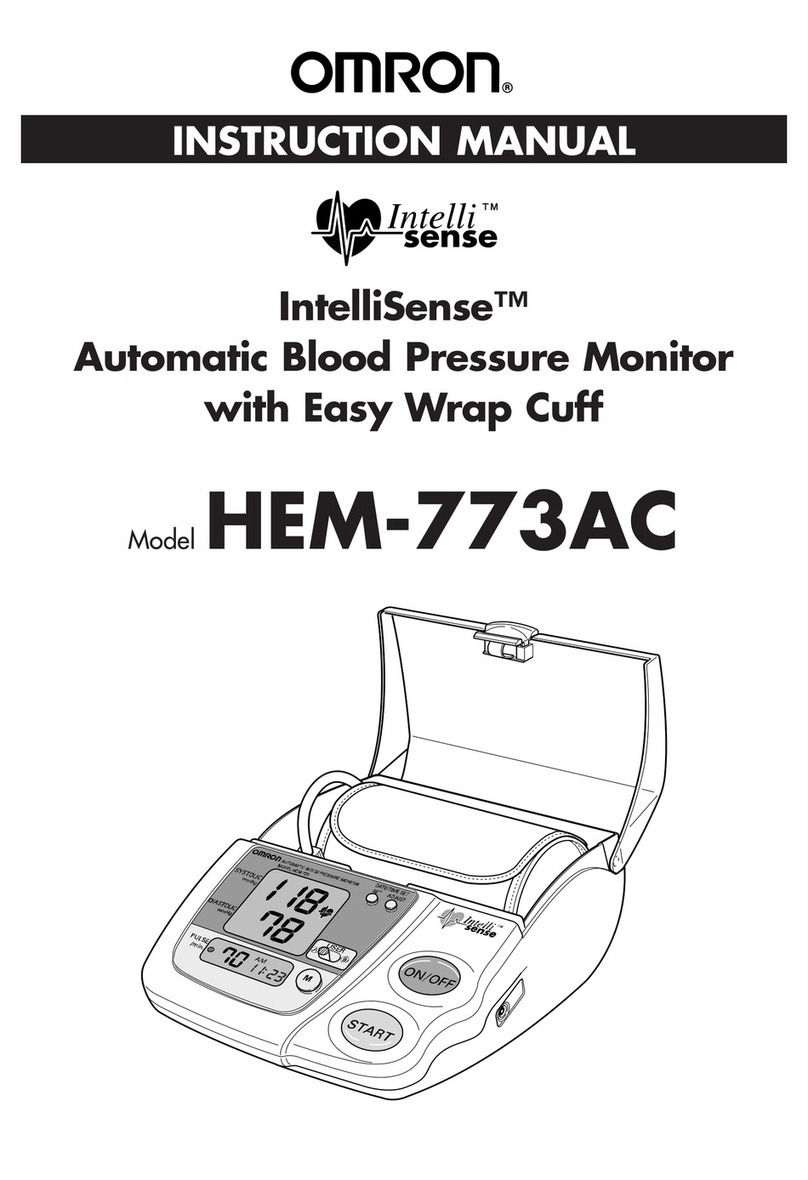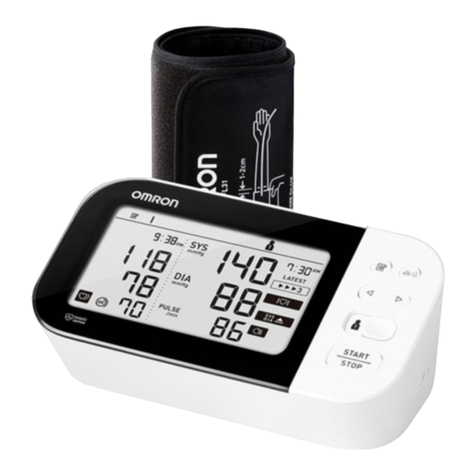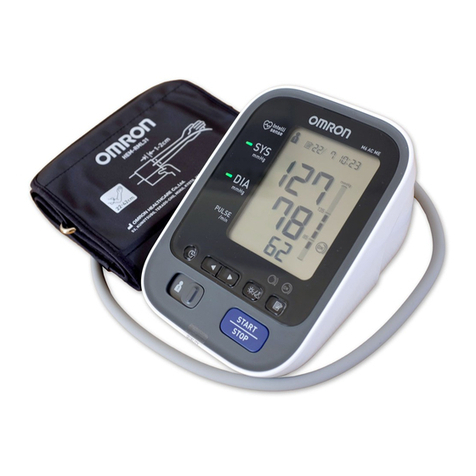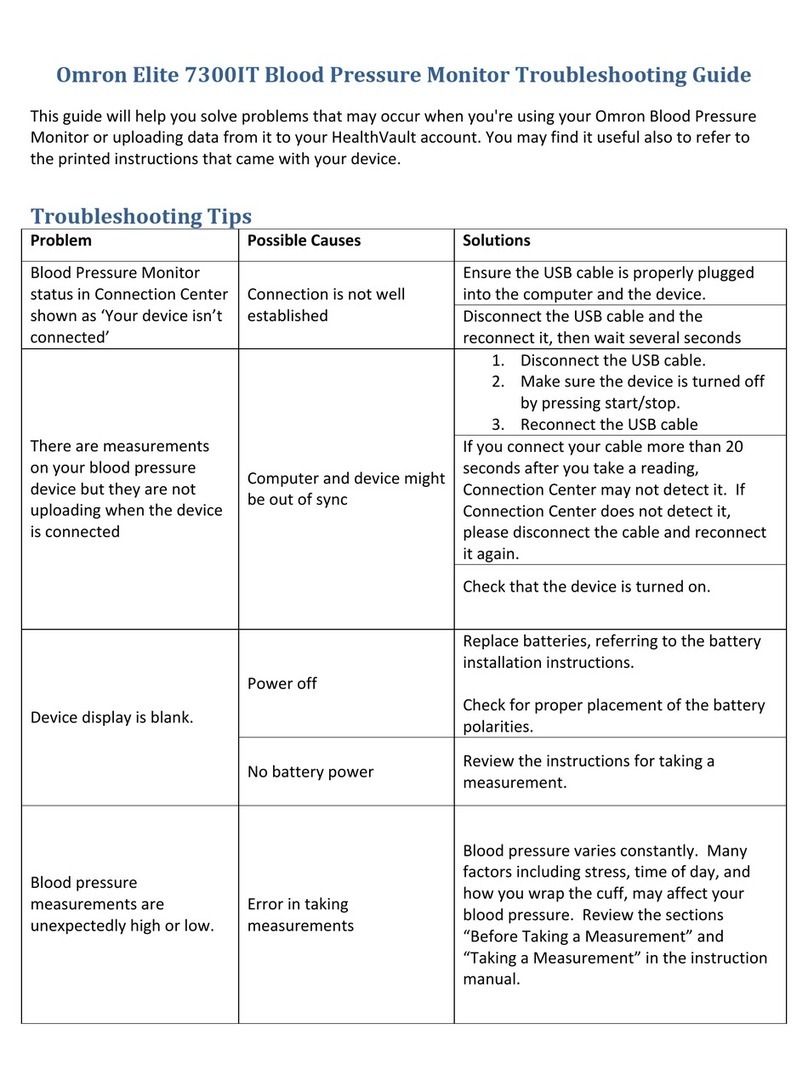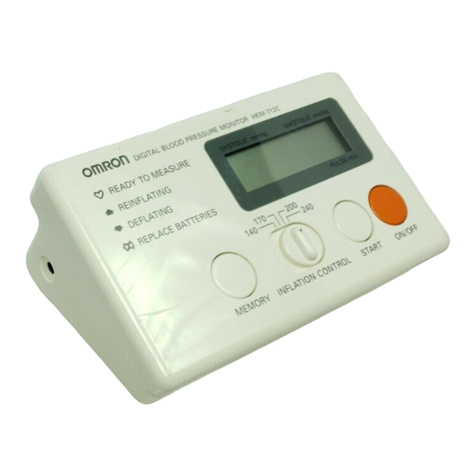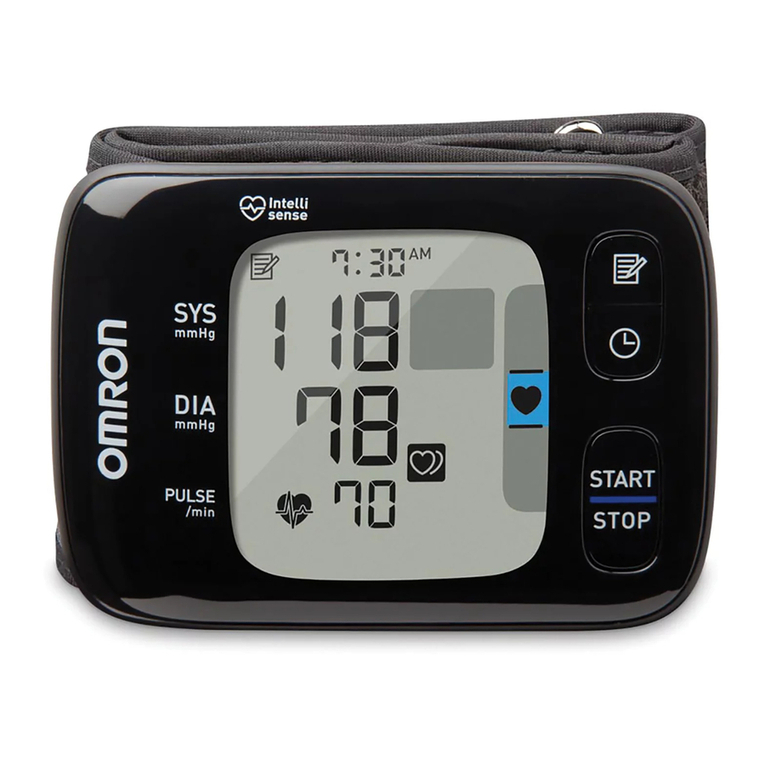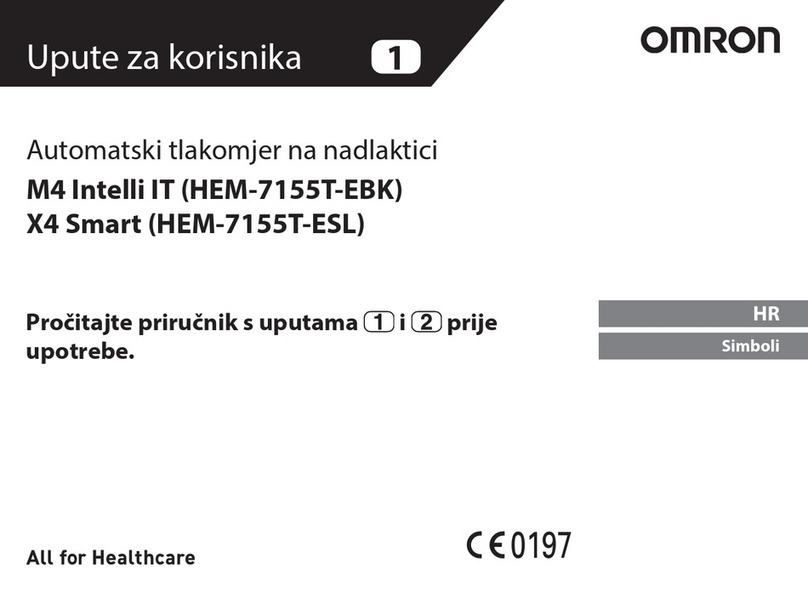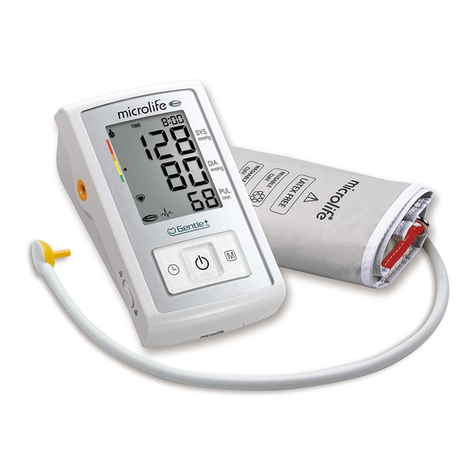•Do not move the arm on which you are taking the measurement. Do not talk.
• Please avoid measuring your blood pressure while you are on a vehicle
because your body will move.
• Allow an interval of at least three minutes between two successive mea-
surements, as otherwise a congestion of blood will occur which may
distort the readings. Always remove the cuff between readings.
English
R5-I
1
Description of the monitor
Contents
This blood pressure monitor fulfils the requirements of the EC directive 93/42/EEC (Medical
Device Directive). It also conforms to the European standard EN 1060, Non-invasive Sphygmo-
manometers, Part 1: General Requirements and Part 3: Additional Requirements for Electro-
mechanical Blood Pressure Measuring Systems.
Dear Customer ,
Thank you for putting your confidence in OMRON products, which are known for their relia-
bility and advanced technology. We hope that you will be fully satisfied with your new blood
pressure monitor. Before using it, please read the instructions in this manual carefully.
We wish you all the best for the future and especially for your health!
Description of the monitor . . . . . . . . . . . . . . . . . . . . . . . . . . . . . . . . . . . . . . . . . . . . . . . .1
Important instructions for obtaining meaningful blood pressure readings . . . . . . . . . . . . .1
How to measure your blood pressure
. . . . . . . . . . . . . . . . . . . . . . . . . . . . . . . . . . . 2 - 7
. . . . . . . . . . . . . . . . . . . . . . . . . . . . . . . . . 8
Possible faults, their causes and rectificati
on
. . . . . . . . . . . . . . . . . . . . . . . . . . . . . . . . . . 8
Technical data . . . . . . . . . . . . . . . . . . . . . . . . . . . . . . . . . . . . . . . . . . . . . . . . . . . . . . . . .9
General information about high blood pressure . . . . . . . . . . . . . . . . . . . . . . . . . . . . 10 -11
Important instructions for obtaining meaningful blood
pressure readings
• Avoid eating and drinking (alcohol), smoking, sport and taking medicines
before measuring your blood pressure, as these activities influence your
blood pressure values.
• Before you start, sit comfortably on a chair and relax. Measurement must be
carried out calmly and without rushing. It is recommended to check your
blood pressure at least twice a day, once in the morning after getting up and
once in the evening after work.
•You must bare your wrist before applying the cuff. Important: avoid con-
stricting the blood flow if you push up your sleeve.
The OMRON R5-I is a compact, fully automatic wrist blood pressure monitor. Operating on the
oscillometric principle, it measures your blood pressure and pulse simply and quickly from the
wrist. This means the monitor detects the pressure in your artery and converts the information
into a digital reading. This monitor does not require an inflation bulb or stethoscope, so measure-
ments are easy to obtain.
OMRON R5-I uses a new measurement principle. Measuring is carried our during controlled
inflation. It contains an intelligent system for controlled inflation, known as "Intellisense".
This is an advanced method of oscillometric measurement. No pre-setting or re-inflation is
necessary.
OMRON R5-I memorises your last 21 measurements. The cuff fits wrist circumferences from
13.5 cm to 21.5 cm.
Maintenance and storage . . . . . . . . . . . . . .

